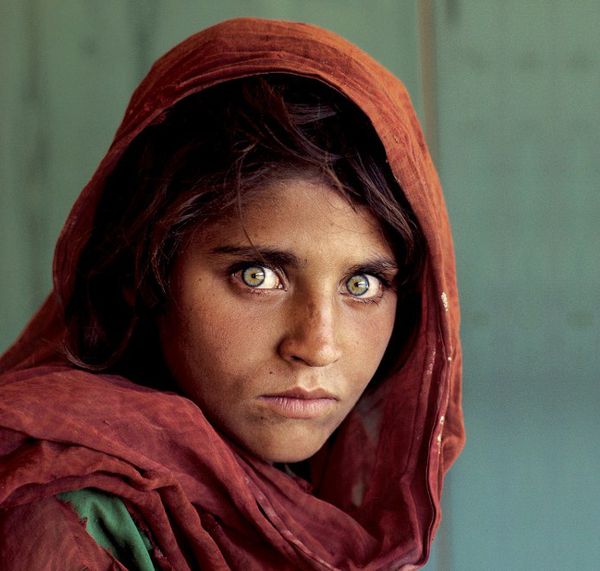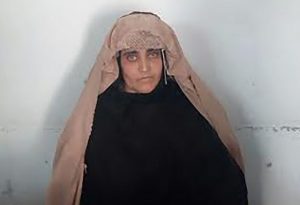The subject of “The Most Recognized National Geographic Photo” is making headlines again, but not as we’d hope.
The photo known as the “Afghan Girl” has been circulated for years as one of the most captivating images of the century. It first appeared publicly on the cover of the June 1985 issue of National Geographic. The identity of the girl with the piercing stare and vibrant green eyes was anonymous. In 2002, the world learned her identity. This week in 2016, we’ve heard news of her recent arrest.

Photo: National Geographic June 1985
Steve McCurry captured the famous photo in December of 1984 in a Pakistani refugee camp for those seeking asylum from war torn Afghanistan. At the time, the Soviet Union was an ever present force and war was uprooting the lives of Afghani people. McCurry was there documenting the situation. He met the young girl and asked permission to photograph her. Later, she would recall being angry at the presence of the strange man. She agreed to be photographed. It would be the first photograph ever captured of her.
In June of the following year, the photo would appear on the cover of National Geographic and be circulated world wide. It has become known as the most recognized in the history of the magazine. With little information, McCurry made many failed attempts in the ’90s to find and identify the young girl. Meanwhile, the photo drew great attention to the war torn middle east. It is said to be the reason for many people’s efforts to assist refugees.

Photo: National Geographic 2002
In 2002, with a team from National Geographic, McCurry was able to locate the girl from the photo. Her name, Sharbat Gula. The journey to find her was exhaustive. As the team surveyed those still living at the Pakistani refugee camp, many woman came forward claiming they were the subject. Many men falsely announced that the photo was of their wives. Eventually, with the confirmation from Thomas Musheno, a forensic examiner for the Federal Bureau of Investigation in Washington, D.C. and assistance from Sharbat’s brother, the team would locate her in the mountains of Afghanistan, according National Geographic. She’d returned there in 1992. Their journey is documented in the 2002 television feature Search for the Afghan Girl.
Sharbat Gula had never seen the photo of herself. Seventeen years had passed when McCurry explained to her the fame it had acquired. Sharbat did not understand why or how the image was considered so powerful. She was now a devout wife and a mother of three girls Robina, Zahida and Alia. A fourth daughter had been lost in infancy. Life had been hard, endlessly affected by war. Cathy Newman reported in a 2002 article in Nat Geo, “Sharbat has never known a happy day, her brother says, except perhaps the day of her marriage.”
It wasn’t until that encounter with McCurry that she’d be photographed again. With the permission of her husband, she removed her hijab and McCurry captured her second ever photo. The mystery of the Afghan girl had been solved. The story would soon loose traction and the original photo would remain most famous, now with an identity attached.
It’s a common misconception that fame translates into success and well being. This is not the case for Sharbat. Her life is testament to the fact that mere recognition is not guarantee for an easy life. Sherbet’s photo influenced the world, and the world wished the best for her.
Fast forward to present day and news of Sharbat Gula has surfaced again. She has been arrested and charged with falsifying documents to appear as a Pakistani citizen. Once again, she’d found refuge away from her homeland of Afghanistan. Pakistan had put a deadline on when Afghani refugees needed to leave the country and are currently cracking down on false claims of citizenship.
It is reported that Sharbat had intended to return home but was delayed at news of her home village being affected by ISIS. She faces a sentence of 7 to 14 years in prison and a fine between $1000 and $5000, according to the Dawn news agency. Her fate is yet to be determined and once again, the world observes.



